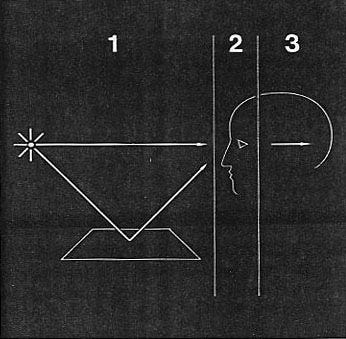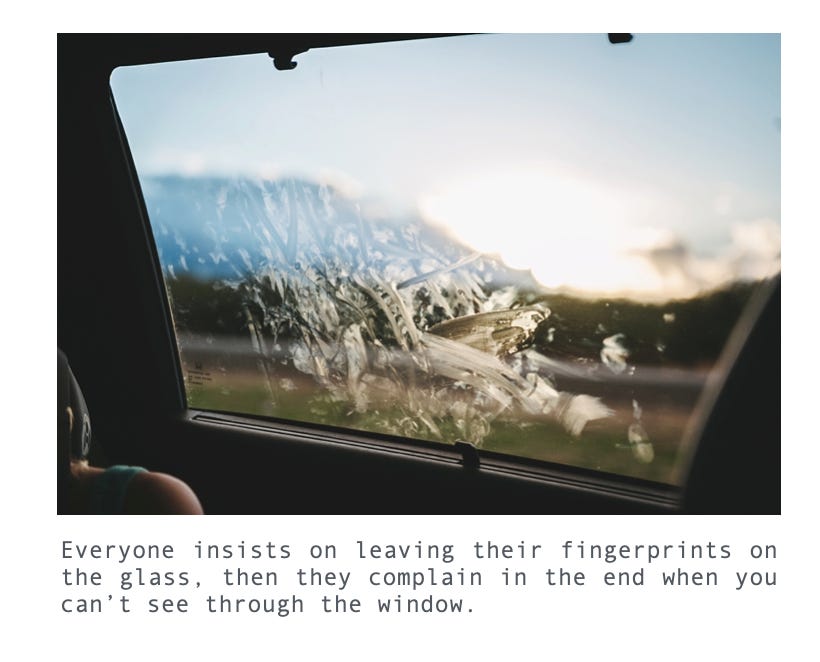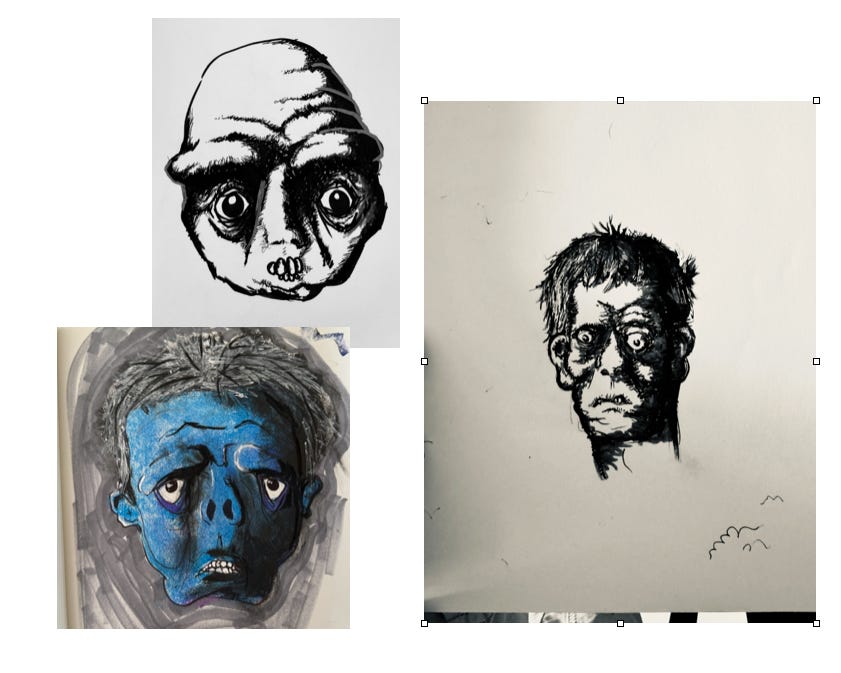SCRAP_STRATS vol 157
lab rat org design.

/// SCHEMATICS (again) ///
I’ve talked about schematics vs diagrams before, but this week has reminded me how important the difference is. You can read the full thing above, but in short –
Schematics are guides for experts in a subject.
A map for those in the know.
Diagrams simplify something to transfer the idea from an expert to an audience.
A summary for those who haven’t done the reading.
Schematics ask; “whats the most efficient way to include all the information?”
Diagrams on the other hand require you to decide “what information do I actually need to include?”
/// MEANING ///
☝︎ People often forget this. Especially in our industry. A brief can’t rely entirely on abstract meaning. That’s my problem with most “strategy lines” – they assume uniform interpretation of the abstract.
/// FINGER SMUDGES ///
Over-processing the work is too real a problem in a world of bloated middle management.
“I would have done this differently, but how you did it works too” is a sentiment not heard nearly enough.
~
plenty of fun metaphors for this one…
there’s a reason a car only has one steering wheel.
There are many ways to get somewhere. the most incorrect option is all of them.
If you want Italian and I want Vietnamese, the worst possible solution is to make pho with spaghetti.
»»»
A relevant thought that I think is important:
People > the work.
Don’t let anyone tell you otherwise.
/// Let the boat sit still ///
Saw this recently:
F that noise. If there is no wind – fish. Or float. Drift, sleep, play cards, whisper, listen to the birds.
~
If you aren’t unproductive on purpose, you’ll be unproductive by accident. And wouldn’t you rather be in control of the timing?
/// Boxes ///
Two wildly different formats, both saying essentially the same thing:
"They are born, then put in a box; they go home to live in a box; they study by ticking boxes; they go to what is called 'work' in a box, where they sit in their cubicle box; they drive to the grocery store in a box to buy food in a box; they go to the gym in a box to sit in a box; they talk about thinking 'outside the box'; and when they die they are put in a box. All boxes, Euclidian, geometrically smooth boxes."
and
yay now we’re all sad together.
/// CULPRITS of CHAOS ///
To continue with the theme of positive thinking – I’ve spent so much of my career thinking about why things fall apart. Who are the most likely culprits for letting chaos in the door2.
Things fall apart for a million reasons.
But things fall apart consistently for one of a few reasons;
People
Sometimes it’s just that someone is a bad person and rots a team from the inside. that is rare and has only happened to me 1.5 times in 12 years of chaos.
Sometimes it is a good person who does all the wrong things for all the right reasons. Most people have been this person here and there (myself included) – but the problem arises when it is consistent.
And sometimes it is just that certain people don’t interact well together. Just bc everyone is good at their job, they have to be good at supporting one another as well.
Process
We often think of process as the antidote to chaos. It is not. It can be a bandaid, but more often it is an irritant in a bigger wound.
There is more to be said here than I have time or interest in writing at the moment, and plenty of smarter people have covered the topic better.3
Incentives/Fears
In my experience, this is the closest thing you have to a crystal ball. If you understand the true motivations and fears of every stakeholder/team member, you can begin to understand where things may start to come apart.
Hint: the incentive is never “the work” and the biggest fear is always about the person, not the org.
This is what the subject line is alluding to. We’re all just rats trying to get our own version of the treat without getting zapped.
Momentum
the most common. “Well, nobody knew why we were doing it this way, but everyone else seemed to understand so we kept going till the train derailed.”
If everyone agrees there is a wall approaching, someone has to be willing to pull the e-brake.
/// Unnecessary syntax ///
Prompted by the above, I had the thought “what does “process” even mean?
Because it could be a mix of any of the following, but it is important to be conscious of which you’re talking about.
Procedure:
A specific set of steps to achieve a task. Typically detailed and prescribed, often formalized in documentation.Method:
A systematic way of doing something. Focuses on the approach or technique used to accomplish a task.Routine:
Regularly followed sequence of actions. Implies habitual or repetitive nature, often without formal documentation.
Workflow:
Sequence of processes through which a piece of work passes. Emphasizes the flow of tasks between people or systems.
Protocol:
Official set of rules governing how tasks should be performed.
Often used in technical or scientific contexts, emphasizing compliance and standards.
System:
An organized framework or structure of interconnected parts. Broader than a single process, encompassing multiple related processes.
Operation:
Execution of a task or function. Can refer to a single task or an overall function within a larger process.
Practice:
Repeated exercise or application of a skill or activity. Implies habitual action, often based on experience rather than formal rules.
Sequence:
Ordered set of actions or events. Emphasizes the order in which steps occur, without necessarily implying formal structure.
Technique:
Specific way of carrying out a task. Focuses on skill or expertise in performing an action, often in a practical or artistic context.
there is probably a cool diagram (schematic?) waiting to be created, showing all the above in relation to one another.
/// soft terminology ///
When you ask someone to define a “concept”
/// what does it mean??? ///
because a (maybe not so) surprising amount of people responded in one way or another to the “content” visual images from a few weeks back, here is another visual that is enjoyable but also not at all clear on what it conveys. Thoughts?

/// pleasure ///
And here’s a pleasant thing to end on:
WEEKLY MONSTER
I feel like I’ve shared, but apparently I have not:
the best part about sitting in an aisle seat toward the back of the plane is everyone walking to the restroom inevitably looks at what you’re drawing.
(did anyone else read that book “boxes” in middle school?)
(I’m not talking about the chaos that Martin Weigel makes the case for)
I pulled thinking from “Reinventing Organizations” by Frederic Laloux, “The Innovator’s Dilemma” by Clayton M. Christensen (never read it in full), “Team of Teams: New Rules of Engagement for a Complex World” by General Stanley McChrystal (never read it in full)










“.. there's a reason a car only has one steering wheel. There are many ways to get somewhere. the most incorrect option is all of them.”
That’s gold, my friend.